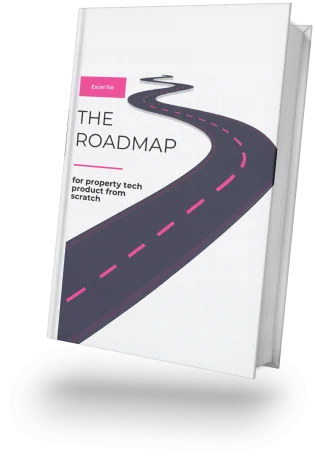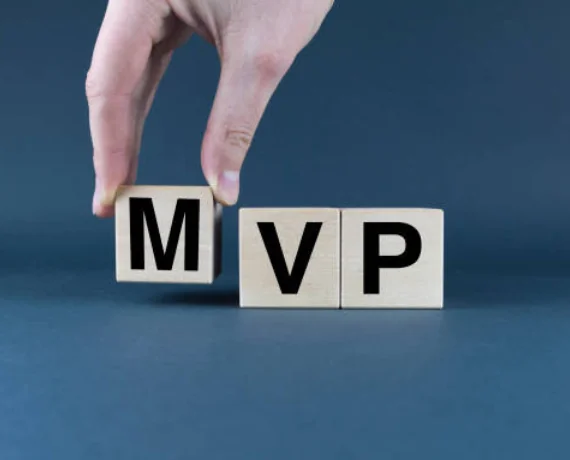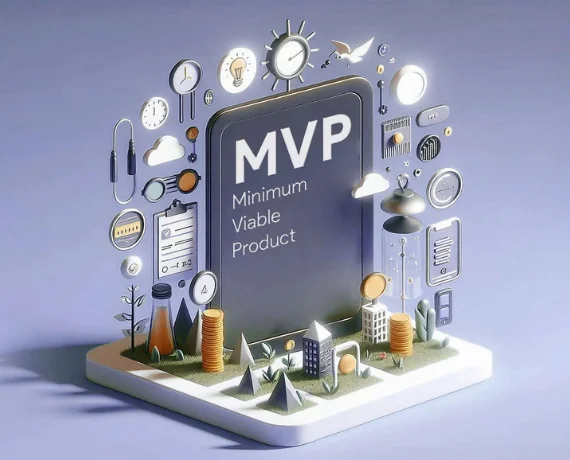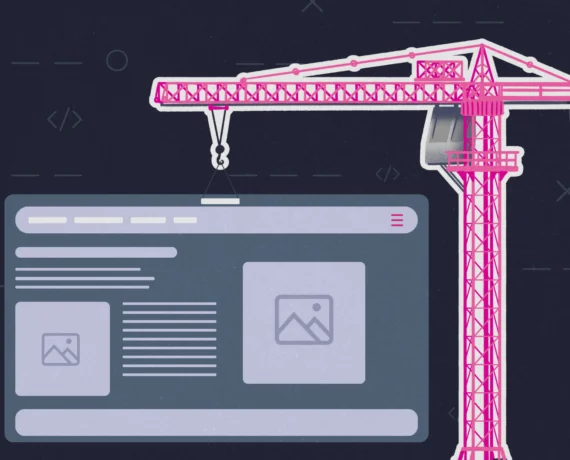Table of Content
- What is a roadmap in software development?
- Introduction to Roadmap
- Why do we need a product roadmap?
- Software Development Considerations
- How to create a roadmap for software development?
- Best Practices for Development
- Team Collaboration and Skills
- Development Roadmap Template
- Roadmaps Goal in a Few Words
Let's create a roadmap together
Book a callBefore you plunge into the software product development process, you spend a great deal of time creating a roadmap. It isn’t a spur-of-the-moment plan, that you instantly come up with. You’ve got to analyze each move, ponder how it fits into your grand product vision, and sort out the must-haves from the nice-to-haves. That’s what our article describes in detail, clarifying what the roadmap is and how to craft a perfect one for your product.
Discover about how much does it cost to develop software in 2025
What is a roadmap in software development?
A roadmap is a strategic blueprint or all-in-one document that gives an outline of goals, major deadlines, resources, and technical aspects for a specific software project. Throughout the software development life cycle, you would rather focus on narrow tasks with different priorities, but you also need to keep a global picture to ensure your smaller goals comply with bigger ones. This is only one step in your roadmap, as it serves as a directional document for teams, stakeholders, and developers to keep everyone on track. You will find there all the project-related details like:
- Goals. This is the starting point of any effective project roadmap. They can be derived from dire user stories and needs, overall business objectives, or customer feedback.
- Functionality. It enlists the key components of features and enhancements that are planned out as a part of the software. These may have a priority defined for them based on the significance and impact each might have.
- Timeline. Each project has a roughly estimated timeframe that indicates when each feature or milestone is expected to be completed. The big line can be said in quarters, months, or with the precise date of the release.
- Prioritizing. Normally features and tasks are prioritized in accordance with what is demanded by the customers, business values, technical complexities, and dependencies among others. This will make the team focus on what is more important.
- Dependencies. These are relations where one task or component relies on the successful completion of another. Developers count on them to understand how things should be built more precisely and set more accurate cut-off dates.
- Resource allocation. The roadmap may also identify the allocation of resources such as development, designers, testers, and other required personnel.
- Risks. The project contains a standard section that describes potential risks or challenges, along with the mitigations.
- KPIs. Those are measurable and quantifiable metrics that teams use to assess their performance, success, and progress toward specific goals. KPIs often have a defined reporting period, such as monthly, quarterly, or annually.
- Iterations. In Agile software development the roadmap may be broken down into iterations or sprints, each with its own sets of features and goals. In other more traditional development approaches it could be framed around major releases.
- The Communication Plan. It is a critical component of project management that helps ensure that the right information is communicated to the right people at the right time, be it an internal or external team, as well as in-house development or outsourcing teams.
A software development roadmap aims to give a clear visual guide that will align the team of developers and all stakeholders with their objectives. It makes it easier to manage expectations on both sides and can be effective in setting up the return areas and effectively managing the choice of what rise areas to focus on. As the course of the project is subject to change, roadmaps can sometimes be updated with new software development requirements or features. In this way, you can get insights into how the shifts will reflect in other areas.
Let’s create your roadmap? Feel free to ask any additional questions you might have. Our experts will be glad to assist you

Introduction to Roadmap
A development roadmap is a crucial tool for any software development project, providing a clear picture of the project’s goals, objectives, and timelines. It serves as a guide for the development team, stakeholders, and project managers, ensuring everyone is on the same page and working towards the same objectives. A well-structured roadmap helps to track progress, identify potential roadblocks, and make informed decisions about the project’s direction. In the context of software development, a roadmap is essential for creating a comprehensive approach to project planning, taking into account various programming languages, artificial intelligence, and machine learning. By offering a strategic vision, the roadmap aligns the development efforts with the broader business goals, ensuring that every step taken is a step towards success.
Why do we need a product roadmap?
Product roadmaps sit among the central strategic tools that provide a focus to all stakeholders involved. Not only do they ensure close alignment of development efforts with broad product and company goals but they also foster teamwork to deliver great products in an environment wherein many teams work under one roof.
The roadmap is a vehicle that keeps everyone ‘on track’ for organizational leaders to monitor the progress of planned features and enhancements for an upcoming period of time in a format that directly ties back to company goals, providing a better understanding of the overarching strategy.
Roadmaps benefit the owners of products and managers by cultivating greater team cohesion around product improvement. They can make sure effective communication is the priority area regardless of what type of team they are working with.
On the side of developers, roadmaps give an abstract view of the “bigger picture.” Thus, team members are equipped with the insight needed to concentrate on the most critical tasks, prevent scope creep, and make quick, autonomous decisions.
Technology Roadmap Example & Template


Software Development Considerations
When creating a software roadmap, it’s essential to consider several key factors, including the development team’s skills and expertise, the project’s requirements and timelines, and the stakeholders’ expectations. The roadmap should be aligned with the product strategy and vision, taking into account customer feedback and market trends. A software roadmap should also be flexible and adaptable, allowing for changes and adjustments as the project progresses. Additionally, it’s crucial to consider the various programming languages and technologies involved in the project, as well as the potential integration with other systems and tools. By taking a comprehensive approach to software development, teams can ensure that their roadmap is effective in guiding the project towards success. This holistic view helps in anticipating challenges and leveraging opportunities, ultimately leading to a more robust and resilient software product.
How to create a roadmap for software development: a step-by-step guide
Developing a software development roadmap is an essential process that requires multiple stages with key players successfully leading the process to success. The following walk-through guide describes each stage from start to finish.
1. Strategic Goal Definition:
- Roles: product manager, CTO, or CEO.
- Process: right from the get-go you need to determine strategic goals that will shape your product scope later on. Hence, narrow down areas that need enhancements by both qualitative and quantitative research. Focus on a cyclic approach and negotiation with teams across different functions to understand the most pressing needs and initiatives, and strive to cover them in your project first.
- Value: clear understanding of what your software ought to achieve.
2. Elicit Stakeholder Input:
- Roles: product manager.
- Process: get feedback from all stakeholders i.e., customers, end-users as well as internal teams. This would arm the roadmap with dimensions rooted in real needs and expectations. You and your team need to dig deep and understand the purpose behind building this product. Don’t forget to figure out what unique value your product is bringing to the table. Based on that information craft a solid business model to set the course for your journey, keep your project afloat, and also give you a clear path for prioritizing ideas.
- Value: User requirements and priorities understood for business.
3. Task Prioritization:
- Roles: product manager, development team.
- Process: agree upon what the most important and achievable features or substantial improvements to the product would be. Primarily consider the impacts of technical difficulty, demand level across the market, and intersection resource avails. One effective way to do this is to identify one “golden feature” that represents the top priority and also the introductory element that should be present in a specific release. This golden feature has to achieve the right balance: it needs to be simple enough to communicate yet also capable of addressing the current user struggles. Organizing these tasks in a logical sequence ensures a smooth progression from the initial vision to actionable tasks.
- Value: the list of prioritized features or enhancements with an order of implementation.
4. High-Level Timeline Estimation:
- Roles: project manager, product owner.
- Process: Develop an ultimate schedule depicting the development of each feature or enhancement, taking into account dependencies and resource constraints. This schedule should serve as a delivery roadmap, outlining the breakdown of product features into specific tasks and deliverables for the development team. The use of dates can be rather controversial. It mostly applies to the internal product roadmaps that regulate team progress and timely task completion. When it comes to client-centric, those need more room for flexibility as the change is inevitable. Therefore, the best way is to keep them plain and stepwise rather than stick to fixed dates.
- Value: high-level estimates for features that overlap in their development.
5. Design Roadmap:
- Roles: product manager, UX/UI designer.
- Process: a product roadmap should not just list product ideas, but picture your vision and how it relates to your company’s goals. Some managers still use old-school software like Google presentation tools and Excel spreadsheets to visualize their roadmaps, but there are more modern tools like Craft, OneDesk, ProductPlan, Aha, and Roadmunk with features of swimlanes, drag-and-drop editors, and movable cards to makes the process more interactive.
- Result: a roadmap document that is easy to understand and work with.
6. Communicate Your Roadmap:
- Roles: product manager, development team, product owner.
- Process: Roadmap misunderstanding via appropriate communication to all pertinent stakeholders of the product including the product team, development team, sales, marketing, and customer support. Clearly rationalize for prioritizing particular features over others for a better acquaintance at the stakeholder’s end. Unveil adequate details on internal roadmaps shared with the customer without disclosing special strategies.
- Value: connection with each of the touchpoints required in executing a software development lifecycle that aligns with your expectations.
7. Clear Task Breakdown:
- Roles: development team, product owner, Scrum master (if using Agile).
- Process: The first thing in this whole process of task breakdown is to clearly identify the project at hand to get a strong clarification of its objectives and scope, especially when dealing with complex problems. You then proceed to list down the high-level deliverables that would represent major milestones in the project. From this point, each high-level deliverable is decomposed into smaller sub-deliverables or components. This is essential to build more specific time estimations and avoid miscalculations. Discover effective methods for accurately estimating the cost of your software development project and avoid costly surprises.
- Value: each item on the roadmap will have a well-supported task list.
8. Implement and Monitor Progress:
- Roles: development team, project manager, UI/UX designers.
- Process: initiate implementation of tasks as stated on the roadmap with a development team. Continuously track your progress while reviewing the roadmap regularly to adapt to unforeseen challenges or changes in priorities. Once the changes occur, you will be able to adjust your strategy, but it will take more time eventually. Changes will affect the deadlines as you will have to shift forward to other task completion. Either way, raise PO’s awareness of the consequences of change.
- Value: regular tracking of continuous progress in development, greater flexibility.
9. Review and Iteration:
- Roles: product manager, development team, DevOps, QA specialists.
- Process: review the roadmap at regular intervals in order to keep track of features’ progress in development and make necessary adjustments based on user feedback, changes in the prioritization, or any emerging unexpected situations.
- Value: an evolving roadmap still on track with the software’s strategic goals, saving valuable resources such as time, money, and effort.
10. Launch and Gather Feedback:
-
Roles: product manager, product owner, development team.
Process: here comes the final stage – launching the product. After the trial period, you can get feedback from users regarding user experience, usability issues, bugs that need to be fixed, and possible improvements they would like. Consider adjusting the course of the roadmap in future iterations based on it.
Value: valuable insights for continuous improvement and refinement. Understanding how developers’ work contributes to the overall goals and vision of the product can enhance motivation and a sense of purpose within the team.
The participants in software development roadmap creation should be adaptable to a variety of needs as well as changing conditions. It is a collaborative, ongoing process that doesn’t stop after the launch but continues to fit with strategic goals across time.
Looking for a tech partner for your software project?
Best Practices for Development
To create an effective software roadmap, teams should follow best practices such as regularly reviewing and updating the roadmap, tracking progress and milestones, and prioritizing tasks and features based on business value and customer needs. It’s also essential to establish clear communication channels and collaboration among team members, stakeholders, and project managers. A well-structured roadmap should include specific features, timelines, and resources required for each stage of the project. By following these best practices, teams can ensure that their software roadmap is a valuable resource that helps to guide the project towards success. Furthermore, teams should consider using agile methodologies and iterative development approaches to facilitate flexibility and adaptability in the development process. This approach not only enhances the team’s ability to respond to changes but also ensures continuous improvement and alignment with the strategic goals.
Team Collaboration and Skills
Effective team collaboration and skills are critical to the success of any software development project. The development team should have a diverse set of skills, including coding skills, problem-solving abilities, and communication skills. Team members should be able to work collaboratively, sharing knowledge and expertise to ensure that the project is completed on time and to the required standard. The team should also be able to adapt to changing requirements and priorities, and be willing to learn and acquire new skills as needed. By fostering a culture of collaboration and continuous learning, teams can ensure that they have the skills and expertise required to deliver high-quality software solutions. Additionally, teams should consider using tools and technologies that facilitate collaboration, such as version control systems and project management software. These tools not only streamline the development process but also enhance transparency and accountability within the team.
Development Roadmap Template
A development roadmap template can be a useful tool for teams looking to create a comprehensive and effective software roadmap. The template should include sections for project overview, goals and objectives, timelines and milestones, resources and budget, and risk management. It should also include space for tracking progress and updates, as well as for noting changes and adjustments to the project plan. By using a template, teams can ensure that their roadmap is well-structured and easy to follow, and that it includes all the necessary information to guide the project towards success. Some key elements to include in the template are:
- Project vision and mission statement
- High-level goals and objectives
- Key stakeholders and their roles
- Timelines and milestones
- Resources and budget
- Risk management plan
- Tracking and update schedule
- Change management process
- Communication plan
By including these elements, teams can create a comprehensive and effective development roadmap that helps to guide the project towards success. This structured approach ensures that all aspects of the project are considered and managed effectively, leading to a more organized and efficient development process.
Technology Roadmap Example & Template


Roadmaps Goal in a Few Words
To sum up, roadmap development is a meticulous process that involves all links. You start at strategic goals, get the input, prioritize then design the road map, and finally task breakdown and development. Go forward, review, and iterate by tracking what you have accomplished so far. The final goal is the developed MVP, where you will consider user feedback and customer insights in the end. This way, your software development remains aligned with your strategic goals so that later on, they can be fully matched with the client’s vision.
Several tools are widely used to create and manage software development roadmaps, including:
- ProductPlan: Offers drag-and-drop functionality and swimlane views for easy visualization.
- Aha!: Provides robust features for goal setting, prioritization, and timeline management.
- Roadmunk: Known for its customizable templates and collaboration features.
- Jira: Popular in Agile environments, it integrates roadmap planning with task tracking and sprint management.
- Trello: Uses boards and cards to visualize tasks and timelines, ideal for smaller teams.
- Craft: Focuses on simplicity and collaboration, making it easy to share roadmaps with stakeholders.
These tools help teams create dynamic, interactive roadmaps that can be easily updated and shared with stakeholders.
A software development roadmap should be updated regularly to reflect changes in priorities, feedback, or unforeseen challenges. In Agile environments, roadmaps are often reviewed and adjusted at the end of each sprint or iteration, typically every 2-4 weeks. For more traditional development approaches, updates might occur quarterly or whenever significant changes in project scope, timelines, or resources arise. Regular updates ensure the roadmap remains aligned with strategic goals and adapts to evolving user needs or market conditions.
Creating a product roadmap in an Agile environment comprises a series of steps. One starts with clear strategic objectives and decides on feature priority using a criterion of customer value and technical feasibility before planning out iterations or sprints that each have a goal. It would call for collaboration among the cross-functional teams and reviewing roadmaps on a constant basis to align changes that might affect requirements or feedback throughout the process. Agile project management tools would facilitate actual communication by eyeing the roadmap in place. They have continuously sought input, from both the users and internal teams promoting continual feedback while the roadmaps can flexibly be reshuffled to account for changes and shifting priorities in the course of implementation of the Agile development approach.
The key elements of a holistic product roadmap should comprise the key products of objectives or goals, a list of features with enhancements that have been planned along with prioritization, as well as an estimated timeline detailing the various sets of features, a clear order for prioritization, tasks dependent, resource allocation, risk assessment, and key performance indicators for gauging progress, iteration or sprint planning, and a communication plan to inform the stakeholders.
In general, it is a strategic document in the form of a visual blueprint scheme that displays objectives, features, priorities, and the terms for developing a software product. A holistic view of the journey the product is expected to have in the endeavour to achieve the company’s objectives besides meeting the customer’s needs, together with a guiding development plan. This roadmap is a critical communication tool to share with all the concerned with both internal and external parties as to how the product is headed and the manner in which it is to be achieved.
Questions? Answers!
What tools are commonly used to create and manage software development roadmaps?
Several tools are widely used to create and manage software development roadmaps, including:
- ProductPlan: Offers drag-and-drop functionality and swimlane views for easy visualization.
- Aha!: Provides robust features for goal setting, prioritization, and timeline management.
- Roadmunk: Known for its customizable templates and collaboration features.
- Jira: Popular in Agile environments, it integrates roadmap planning with task tracking and sprint management.
- Trello: Uses boards and cards to visualize tasks and timelines, ideal for smaller teams.
- Craft: Focuses on simplicity and collaboration, making it easy to share roadmaps with stakeholders.
These tools help teams create dynamic, interactive roadmaps that can be easily updated and shared with stakeholders.
How often should a software development roadmap be updated?
A software development roadmap should be updated regularly to reflect changes in priorities, feedback, or unforeseen challenges. In Agile environments, roadmaps are often reviewed and adjusted at the end of each sprint or iteration, typically every 2-4 weeks. For more traditional development approaches, updates might occur quarterly or whenever significant changes in project scope, timelines, or resources arise. Regular updates ensure the roadmap remains aligned with strategic goals and adapts to evolving user needs or market conditions.
How do you create a product roadmap in Agile?
Creating a product roadmap in an Agile environment comprises a series of steps. One starts with clear strategic objectives and decides on feature priority using a criterion of customer value and technical feasibility before planning out iterations or sprints that each have a goal. It would call for collaboration among the cross-functional teams and reviewing roadmaps on a constant basis to align changes that might affect requirements or feedback throughout the process. Agile project management tools would facilitate actual communication by eyeing the roadmap in place. They have continuously sought input, from both the users and internal teams promoting continual feedback while the roadmaps can flexibly be reshuffled to account for changes and shifting priorities in the course of implementation of the Agile development approach.
What should be included in a product roadmap?
The key elements of a holistic product roadmap should comprise the key products of objectives or goals, a list of features with enhancements that have been planned along with prioritization, as well as an estimated timeline detailing the various sets of features, a clear order for prioritization, tasks dependent, resource allocation, risk assessment, and key performance indicators for gauging progress, iteration or sprint planning, and a communication plan to inform the stakeholders.
What is a software product roadmap?
In general, it is a strategic document in the form of a visual blueprint scheme that displays objectives, features, priorities, and the terms for developing a software product. A holistic view of the journey the product is expected to have in the endeavour to achieve the company’s objectives besides meeting the customer’s needs, together with a guiding development plan. This roadmap is a critical communication tool to share with all the concerned with both internal and external parties as to how the product is headed and the manner in which it is to be achieved.




